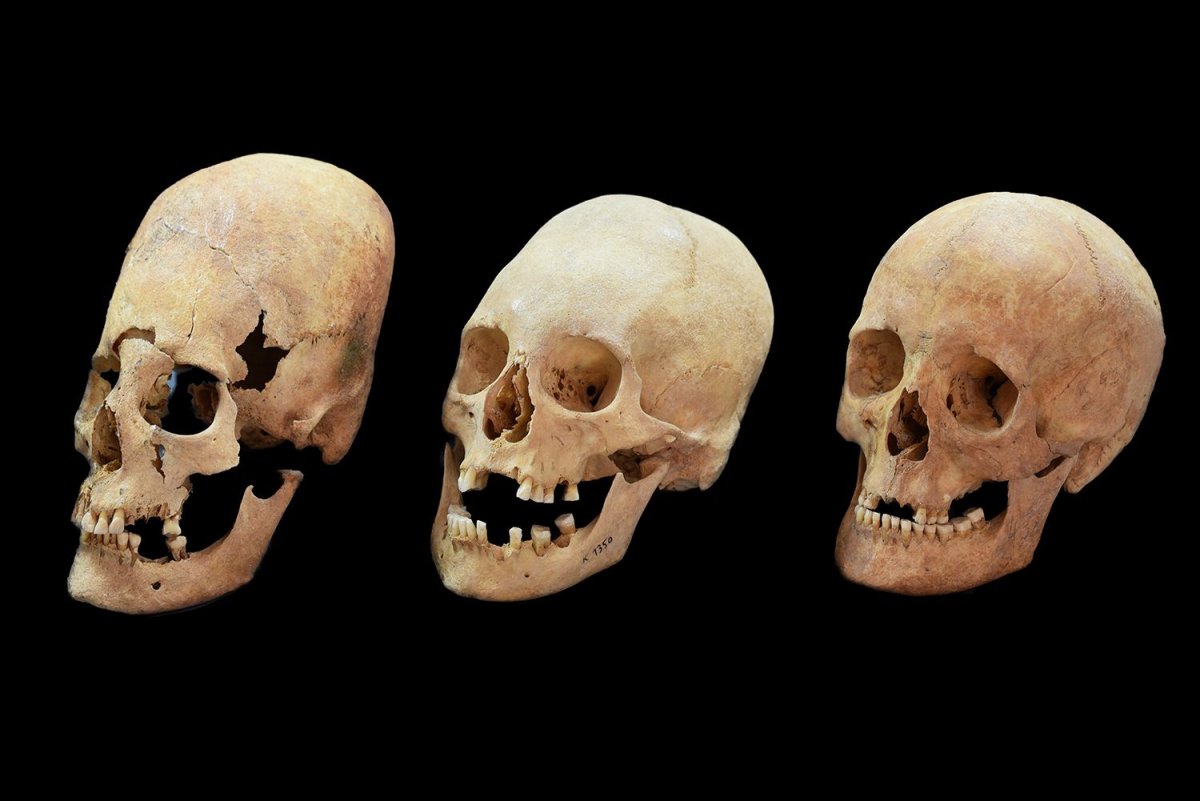
A mysterious collection of elongated skulls found in Germany has perplexed archaeologists for years. A new DNA analysis solves the mystery, but with a disturbing twist: the skulls belonged to women who were traded as brides.
The skulls were shaped from having been tightly wrapped soon after birth, a practice found in many cultures throughout history. The shape was regarded as a symbol of high social standing because it took time and dedication to receive. The practice was popular in Eastern Europe, where it had been introduced by nomadic Huns.
But elongated skulls found on 13 female skeletons from around 500 A.D. discovered in southern German towns along the Danube River confused archaeologists. Western Europe was not known to have engaged in this practice. So who were these women?
DNA Reveals an Ancient Practice
Based on this finding, the researchers concluded that Western Europeans did not adopt the practice of skull deforming. Rather, these women immigrated from Eastern Europe.
But why? According to the researchers they were likely traded as "treaty brides." Their strange shaped heads would not have been the only reason that these women would have stood out in their newly adopted homes. The DNA analysis revealed that they would have had dark hair, skin, and eyes in a geographic region where blue eyes and blonde hair were most common.
Strategic Brides

Related: Ancient Hominin Skull From China Suggests Humans Didn't Evolve Just From African Ancestors
These standout features may have made these Eastern Europeans particularly appealing, said Veeramah. "Our data points to Barbarian tribes in Western and Central Europe specifically acquiring exotic looking women with elongated heads born elsewhere, perhaps to form strategic alliances with other entities to the east, but that the Huns likely did not have much of a direct role in this process," he said in a statement.
In addition to revealing the origins of these mysterious women, the new study also shows that migration during this time period was not restricted to men. In fact, it seems that these women traversed the many miles from Eastern Europe to the West unaccompanied by men, Archeology News Network reported.
Uncommon Knowledge
Newsweek is committed to challenging conventional wisdom and finding connections in the search for common ground.
Newsweek is committed to challenging conventional wisdom and finding connections in the search for common ground.
About the writer
To read how Newsweek uses AI as a newsroom tool, Click here.








